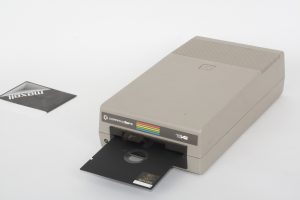Module 16: Other Conversions
You may use a calculator in this module as needed.
Converting Measurements of Time

You probably know all of the necessary conversions for time. When we get to units of time larger than weeks, however, we encounter problems because not all months have the same number of days, a year is not exactly ![]() weeks, and the time it takes for the Earth to orbit the Sun is not exactly
weeks, and the time it takes for the Earth to orbit the Sun is not exactly ![]() days. Therefore, it doesn’t make sense to expect an exact answer to a question like “how many minutes are in one month?” We will have to use our best judgment in situations such as these.
days. Therefore, it doesn’t make sense to expect an exact answer to a question like “how many minutes are in one month?” We will have to use our best judgment in situations such as these.
![]() min =
min = ![]() sec
sec
![]() hr =
hr = ![]() min
min
![]() day (dy) =
day (dy) = ![]() hr
hr
![]() week (wk) =
week (wk) = ![]() dy
dy
![]() year (yr) =
year (yr) = ![]() dy
dy
Exercises
1. How many minutes is one standard ![]() -day year?[1]
-day year?[1]
2. Have you been alive for ![]() billion seconds? Is this even possible?
billion seconds? Is this even possible?
Converting Rates
Exercises
Usain Bolt holds the world record time for the ![]() -meter dash,
-meter dash, ![]() seconds.
seconds.
3. What was his average speed in kilometers per hour?
4. What was his average speed in miles per hour?
The more information we know, the more things we can figure out.
Exercises

An F-![]() fighter jet can reach a sustained top speed of roughly Mach
fighter jet can reach a sustained top speed of roughly Mach ![]() ; this is
; this is ![]() times the speed of sound, which is
times the speed of sound, which is ![]() miles per hour.[2]
miles per hour.[2]
5. What is the jet’s top speed in miles per hour?
6. At this speed, how many miles would the jet travel in one minute?
The jet’s range at this speed before it runs out of fuel is around ![]() miles.
miles.
7. If the jet flies ![]() miles at top speed, for how many minutes will it fly?
miles at top speed, for how many minutes will it fly?
The jet’s maximum fuel capacity is ![]() gallons of fuel.
gallons of fuel.
8. If the jet flies ![]() miles and burns
miles and burns ![]() gallons of fuel, find the jet’s fuel efficiency, in miles per gallon.
gallons of fuel, find the jet’s fuel efficiency, in miles per gallon.
9. Rewrite the jet’s fuel efficiency, in gallons per mile.
10. How many gallons of fuel does the jet consume in one minute?
Measurement Prefixes: Larger
Now let’s turn our attention to converting units based on their prefixes. We’ll start with large units of measure.
| tera- (T) | giga- (G) | mega- (M) | kilo- (k) | [base unit] |
| trillion | billion | million | thousand | one |
Notice that the powers of these units are multiples of ![]() , just as with the engineering notation we saw in a previous module. Each prefix is
, just as with the engineering notation we saw in a previous module. Each prefix is ![]() times the next smaller prefix, so moving one place in the chart means moving the decimal point three places. Also notice that capitalization is important; megagram (which is also called a metric ton) is Mg with a capital M, but milligram is mg with a lowercase m.
times the next smaller prefix, so moving one place in the chart means moving the decimal point three places. Also notice that capitalization is important; megagram (which is also called a metric ton) is Mg with a capital M, but milligram is mg with a lowercase m.
Using computer memory as an example:
![]() kilobyte =
kilobyte = ![]() bytes
bytes
![]() megabyte =
megabyte = ![]() kilobytes =
kilobytes = ![]() bytes
bytes
![]() gigabyte =
gigabyte = ![]() megabytes =
megabytes = ![]() kilobytes, etc.
kilobytes, etc.
![]() terabyte =
terabyte = ![]() gigabytes =
gigabytes = ![]() megabytes, etc.
megabytes, etc.
Note: There can be inconsistencies with different people’s understanding of these prefixes with regards to computer memory, which is counted in powers of ![]() , not
, not ![]() . Computer engineers originally defined
. Computer engineers originally defined ![]() kilobyte as
kilobyte as ![]() bytes because
bytes because ![]() , which is very close to
, which is very close to ![]() . However, we will consider these prefixes to be powers of
. However, we will consider these prefixes to be powers of ![]() , not
, not ![]() . There is an explanation at https://physics.nist.gov/cuu/Units/binary.html.
. There is an explanation at https://physics.nist.gov/cuu/Units/binary.html.
Exercises

11. A ![]() inch floppy disk from the 1980s could store about
inch floppy disk from the 1980s could store about ![]() kB; a
kB; a ![]() inch floppy disk from the 1990s could store about
inch floppy disk from the 1990s could store about ![]() MB. By what factor was the storage capacity increased?
MB. By what factor was the storage capacity increased?
12. How many times greater is the storage capacity of a ![]() TB hard drive than a
TB hard drive than a ![]() GB hard drive?
GB hard drive?
13. In an article describing small nuclear reactors that are designed to be retrofitted into coal plants, Dr. Jose Reyes of Oregon State University says “One module will produce ![]() megawatts of electricity. That’s enough for about
megawatts of electricity. That’s enough for about ![]() thousand homes.”[3] How much electricity per home is this?
thousand homes.”[3] How much electricity per home is this?
14. In the same article, Dr. Reyes says “a ![]() megawatt module could produce about
megawatt module could produce about ![]() million gallons of clean water per day using existing technologies in reverse osmosis.” What is the rate of watts per gallon?
million gallons of clean water per day using existing technologies in reverse osmosis.” What is the rate of watts per gallon?
15. The destructive power of nuclear weapons is measured in kilotons (the equivalent of ![]() tons of TNT) or megatons (the equivalent of
tons of TNT) or megatons (the equivalent of ![]() tons of TNT). The first nuclear device ever tested, the US’s Trinity, was measured at roughly
tons of TNT). The first nuclear device ever tested, the US’s Trinity, was measured at roughly ![]() kilotons on July 16, 1945. The largest thermonuclear weapon ever detonated, at
kilotons on July 16, 1945. The largest thermonuclear weapon ever detonated, at ![]() megatons, was the USSR’s Tsar Bomba, on October 31, 1961.[4] (Video of Tsar Bomba was declassified almost 60 years later, in August 2020.) How many times more powerful was Tsar Bomba than Trinity?
megatons, was the USSR’s Tsar Bomba, on October 31, 1961.[4] (Video of Tsar Bomba was declassified almost 60 years later, in August 2020.) How many times more powerful was Tsar Bomba than Trinity?
Measurement Prefixes: Smaller
Now we’ll go in the other direction and look at small units of measure.
| [base unit] | milli- (m) | micro- (μ or mc) | nano- (n) | pico (p) |
| one | thousandth | millionth | billionth | trillionth |
The symbol for micro- is the Greek letter μ (pronounced “myoo”). Because this character can be difficult to replicate, you may see the letter “u” standing in for “μ” in web-based or plaintext technical articles… or you may see the prefix “mc” instead.
Again, the powers are multiples of ![]() ; each prefix gets smaller by a factor of
; each prefix gets smaller by a factor of ![]() . The negative exponents can sometime be complicated to work with, and it may help to think about things in reverse.
. The negative exponents can sometime be complicated to work with, and it may help to think about things in reverse.
![]() meter =
meter = ![]() millimeters =
millimeters = ![]() micrometers =
micrometers = ![]() nanometers =
nanometers = ![]() picometers
picometers
![]() second =
second = ![]() milliseconds =
milliseconds = ![]() microseconds =
microseconds = ![]() nanoseconds =
nanoseconds = ![]() picoseconds
picoseconds
…and so on.
See https://physics.nist.gov/cuu/Units/prefixes.html for a list of more prefixes.
Exercises
16. An article about network latency compares the following latency times: “So a ![]() Mbps link adds
Mbps link adds ![]() milliseconds to the RTT, a
milliseconds to the RTT, a ![]() Mbps link
Mbps link ![]() ms and a
ms and a ![]() Gbps link just
Gbps link just ![]() microseconds.”[5] Rewrite these times so that they are all in terms of milliseconds, then rewrite them in terms of microseconds.
microseconds.”[5] Rewrite these times so that they are all in terms of milliseconds, then rewrite them in terms of microseconds.
17. The wavelength of red light is around ![]() nm. Infrared radiation has a wavelength of approximately
nm. Infrared radiation has a wavelength of approximately ![]() μm.[6] Find the ratio of these wavelengths.
μm.[6] Find the ratio of these wavelengths.
18. Nuclear radiation is measured in units called Sieverts, but because this unit is too large to be practical when discussing people’s exposure to radiation, milliSieverts and microSieverts are more commonly used. In 1986, workers cleaning up the Chernobyl disaster were exposed to an estimated dose of ![]() mSv.[7] A typical chest x-ray exposes a person to
mSv.[7] A typical chest x-ray exposes a person to ![]() μSv.[8] How many chest x-rays’ worth of radiation were the workers exposed to?
μSv.[8] How many chest x-rays’ worth of radiation were the workers exposed to?
- If you're familiar with the musical Rent, then you already know the answer. ↵
- My sources for the following set of questions are a combination of former students in the Air National Guard and people who sound like they know what they're talking about on the internet, particularly in this Quora discussion. ↵
- https://www.kgw.com/article/news/local/oregon-company-get-approval-to-build-nuclear-power-plants/283-7b26b8cd-12d5-4116-928a-065731f7a0f6 ↵
- https://en.wikipedia.org/wiki/Nuclear_weapon_yield ↵
- https://www.noction.com/blog/network-latency-effect-on-application-performance ↵
- http://labman.phys.utk.edu/phys222core/modules/m6/The%20EM%20spectrum.html ↵
- https://en.wikipedia.org/wiki/Chernobyl_disaster ↵
- https://www.cancer.org/treatment/understanding-your-diagnosis/tests/understanding-radiation-risk-from-imaging-tests.html ↵

